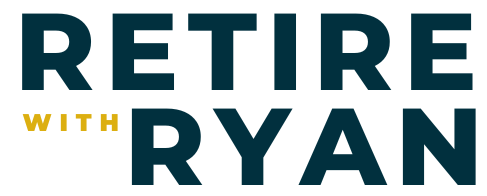Seven Smart Reasons to Leave Your Old 401(k) with a Previous Employer, #258
Building on last week’s discussion about why rolling over your old 401(k) into an IRA could be a smart move, this episode flips the script. It explores seven compelling reasons you might want to leave your 401(k) with your previous employer instead.
I break down factors like fees, company stock advantages, penalty-free withdrawals, legal protections, and unique investment options that could all influence your decision.
If you're approaching retirement or just planning your next career move, this episode is packed with insights to help you make the best choices for your financial future.
You will want to hear this episode if you are interested in...
[04:12] Leave company stock in 401k to use net unrealized depreciation, potentially saving on taxes via long-term capital gains.
[08:55] Consider keeping company stock in an old 401(k) to avoid taxes and penalties if under 59.5 years.
[10:01] IRA withdrawal exemptions and strategies.
[16:01] Consider keeping your old 401 (k) for potential loan access, but check if your provider permits non-employee loans.
[17:50] Deferring 401(k) distributions explained.
When to Leave Your Old 401(k) With Your Previous Employer
Changing jobs often means making quick decisions about retirement savings. While rolling over your old 401(k) into an IRA is a common choice, there are significant advantages to leaving it where it is.
This week, I’m discussing the situations when maintaining your previous employer’s retirement plan is advantageous.
1. Potential for Lower Fees
If you worked for a large organization, their 401(k) plan might offer exceptionally low administrative and investment fees, especially if they’ve chosen robust menus with index fund options.
While IRA costs have dropped due to strong competition among major financial institutions like Schwab, Fidelity, and Vanguard, some large employer plans still offer a lower cost.
Always compare fees before making a move; sometimes, your old 401(k) will be the most cost-effective option available.
2. Tax Benefits of Company Stock (Net Unrealized Appreciation)
Do you have significant company stock in your 401(k)? You could benefit from the unique tax break called Net Unrealized Appreciation (NUA). This allows you to pay lower long-term capital gains rates on your stock’s growth instead of higher ordinary income rates.
However, to take advantage of NUA, you must carefully roll out your stock and be mindful of any 10% penalty if you’re under 59½.
Know your stock’s cost basis and consult with a tax professional to determine if waiting is best, especially if your cost basis is higher.
3. Penalty-Free Access Between Age 55 and 59½
Left your job between 55 and 59½? Here’s a little-known benefit: you can tap your old 401(k) penalty-free before age 59½. If you roll the balance into an IRA, that door closes, unless you qualify for rare exceptions. This rule can be crucial if you need those funds to bridge the gap to retirement, so consider leaving at least part of your balance in the plan until you turn 59½.
4. Enhanced Creditor Protection
Federal law (ERISA) offers 401(k) plans strong protection from creditors and judgments, even in bankruptcy. While rollover IRAs are also protected under federal and many state laws, the details can get complicated.
Certain states may limit IRA protections, so it’s wise to investigate your state’s rules. Segmenting rollover IRAs from contributory IRAs can also help simplify tracking and protection.
5. Access to Stable Value Funds
Some 401(k) plans offer stable value funds, a low-risk investment choice that often comes with a guaranteed minimum rate of return. While money market funds are currently paying more, that could change if interest rates drop.
In lower-rate environments, stable value funds could offer an edge and a safe harbor for your retirement assets.
6. Possible Loan Availability
Need to borrow against your retirement savings? Some plans allow you to take a loan from your 401(k), even after leaving the company. However, this isn’t universal, since loan repayments are usually tied to payroll.
Check with your plan administrator to see if this benefit applies; if it does, it could be an important safety net.
7. Required Minimum Distribution (RMD) Deferral if Still Working
If you work past age 73, keeping your funds in a 401(k) with your current employer lets you defer required minimum distributions (RMDs).
That’s not the case with IRAs. Consolidating old 401(k)s into your current plan can simplify RMD timing and allow your funds to grow tax-deferred for a bit longer.
Make an Informed MovE
Rolling over your 401(k) may seem automatic, but there are times when staying put is the better choice. Carefully assess fees, tax implications, creditor protections, and your unique needs.
Most importantly, consider working with a fiduciary, fee-only financial advisor who understands your entire financial picture.
Resources Mentioned
Subscribe to the Retire with Ryan YouTube Channel
